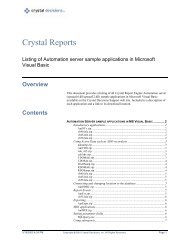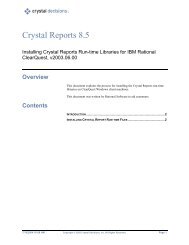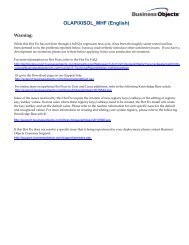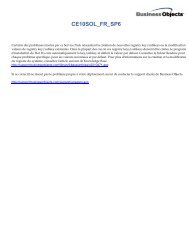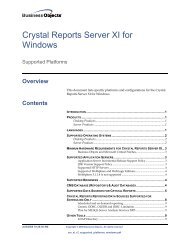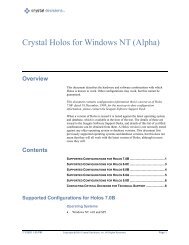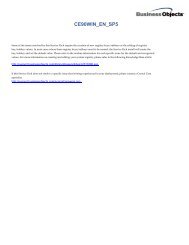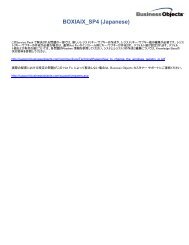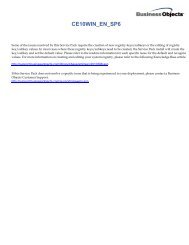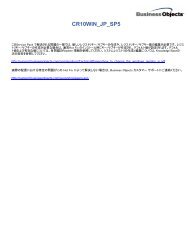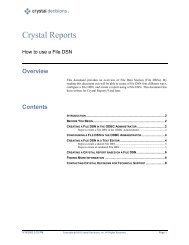Crystal Reports™ 8.5 Developer's Guide
Crystal Reports™ 8.5 Developer's Guide
Crystal Reports™ 8.5 Developer's Guide
Create successful ePaper yourself
Turn your PDF publications into a flip-book with our unique Google optimized e-Paper software.
Overview<br />
Overview<br />
In response to the question, “What data can I use when building reports in the<br />
RDC?”,theansweris,“You have virtually no limitations.” The RDC has been<br />
designed to use virtually any data source with minimal work on your part.<br />
The Report Designer Component supports data access through Data Access<br />
Objects (DAO), Remote Data Objects (RDO), and ActiveX Data Objects (ADO).<br />
Through these three access methods, you can connect to most ISAM, ODBC, and<br />
SQL data sources available to Windows applications. In addition, you can create<br />
DAO Recordsets, RDO Resultsets, or ADO Recordsets in Visual Basic, then replace<br />
the data source used by a report at runtime by calling the SetDataSource method<br />
oftheRDCruntimeReportobject.<br />
The Report Designer Component also provides the ability to design reports based<br />
on Data Definition files, text files that define the fields, and field types of a database<br />
without actually serving as a source of data. Using Data Definition files, you can<br />
design a report without depending on the existence of a database at design time,<br />
then dynamically create the data at runtime and assign it to the Report object of the<br />
Report Designer Component.<br />
If you have installed the full <strong>Crystal</strong> Reports product, you also have the ability to<br />
use the Report Designer Component to connect to any data source that <strong>Crystal</strong><br />
Reports can connect to. In such a case, the Report Designer Component<br />
implements the <strong>Crystal</strong> Reports user interface that you are already familiar with,<br />
soyoucanquicklyconnecttoanyexistingdata.<br />
Finally, the Report Designer Component also supports Data Environments in<br />
Visual Studio 6.0.<br />
Probably the best way to cover all of the data sources is to take a brief look at the<br />
Data Explorer dialog box. This dialog box appears when you select Add Database<br />
to Report or Set Location, and it lists data source options in a hierarchical tree view.<br />
Visit the Library on the Seagate Software website to get documentation and<br />
knowledge base articles about data access.<br />
40 <strong>Crystal</strong> Reports Developer’s <strong>Guide</strong>



